Route & Itinerary
The whole hike is 56 kilometer long, not counting retours, and consists of three parts.
- Nikkaluokta Lodge → Kebnekaise Basecamp (19 km)
- Kebnekaise Basecamp → Summit Kebnekaise → Kebnekaise Basecamp (18 km, +2 000 m elevation gain)
- Kebnekaise Basecamp → Nikkaluokta Lodge (19 km)
You can complete it in three days, but adding a rest day at the lodge makes for a more comfortable summit attempt. The summit involves a total elevation gain of 2 000 meters, and it can be tough on your legs and knees—especially if you haven’t had time to recover. If you come with bad luck, the weather on the mountain may be cloudy and rainy, so having an extra day allows you to choose the best conditions for the summit.
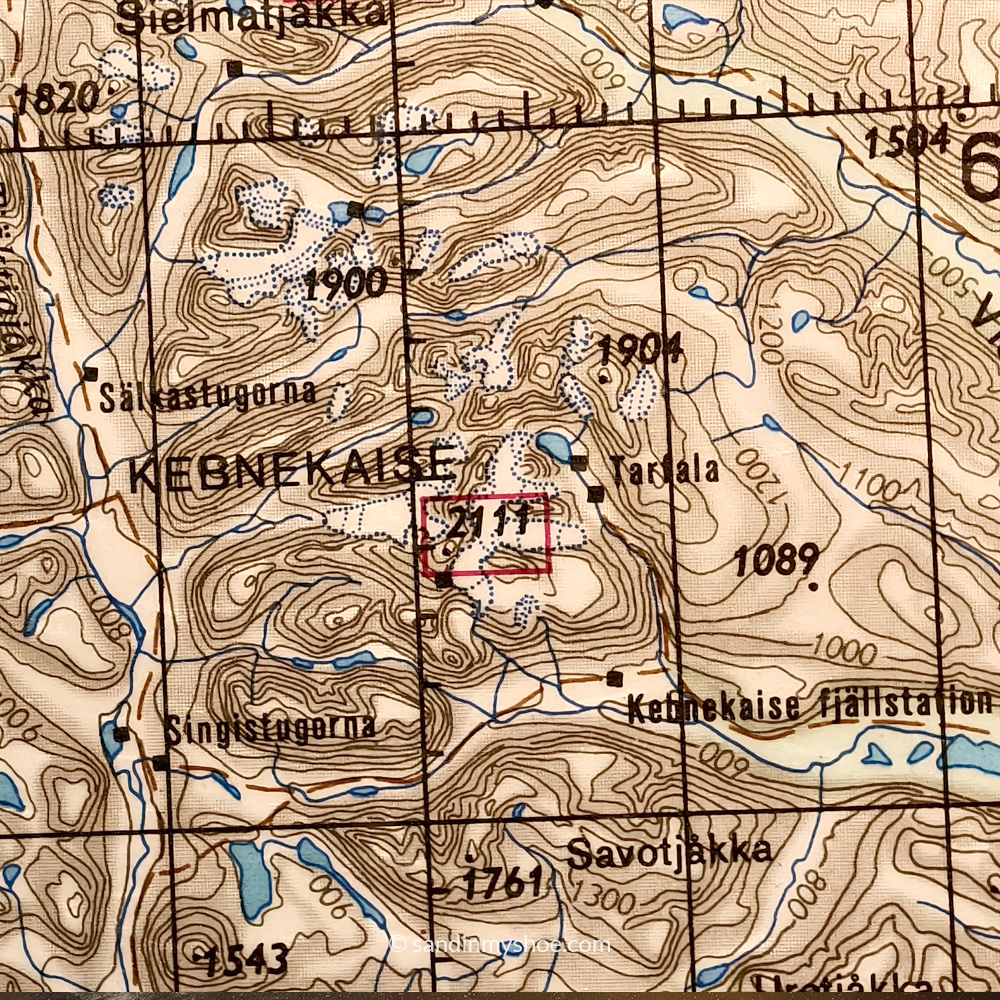
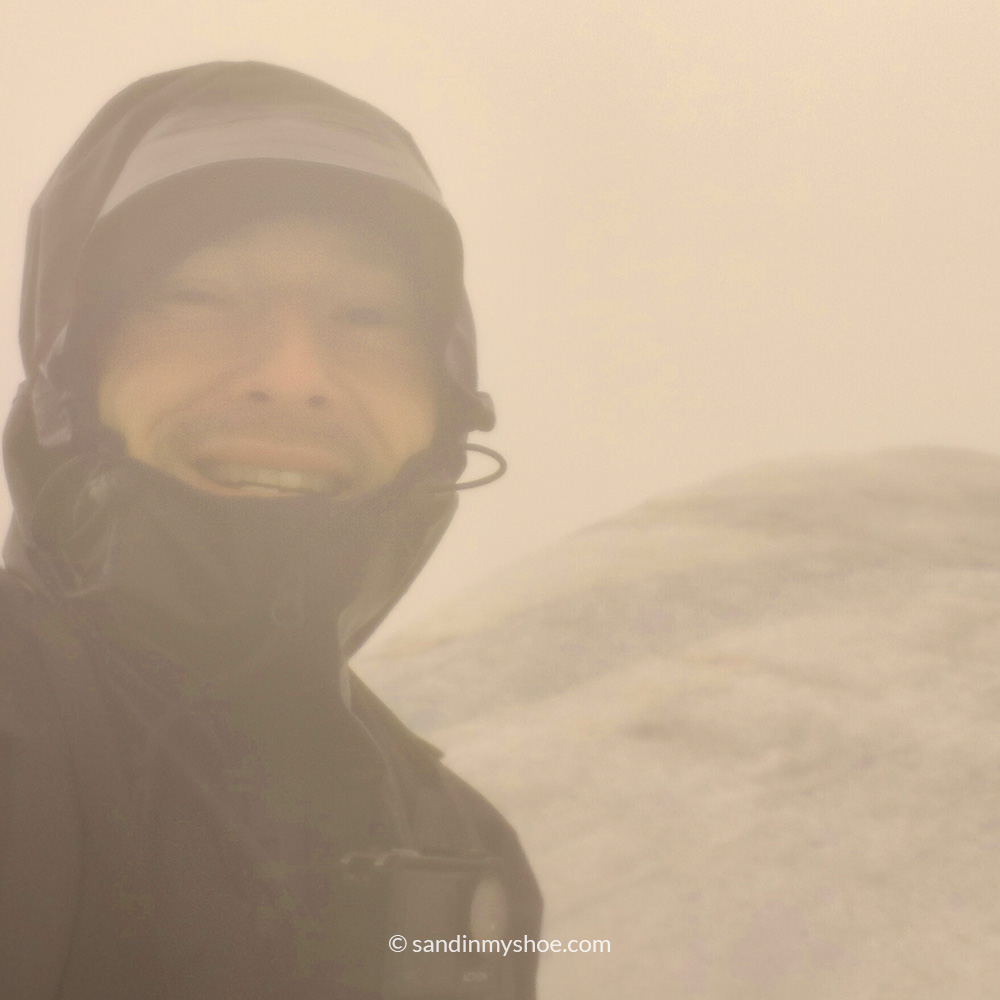
Aim for 4 days:
- Day 1: Nikkaluokta → Basecamp
- Day 2: Rest or light hike
- Day 3: Summit day
- Day 4: Return to Nikkaluokta and bus back to Kiruna
Useful information
Camping in Sweden – Thanks to Allemansrätten
One of the best things about camping in Sweden is that it’s legal to camp almost anywhere, thanks to a unique law called Allemansrätten — the “Right of Public Access.” This law gives everyone the freedom to enjoy nature, even on private land, as long as you follow a few simple rules:
- Leave the spot as you found it — no trash, no damage
- Don’t camp too close to houses or private buildings
- Keep noise to a minimum
- Stay in one spot for only a couple of nights
This makes Sweden a dream destination for hikers, bikers, and nature lovers. Just pack your tent, respect the land, and enjoy the freedom.
Packing List for Kebnekaise Hike
Your packing list depends heavily on whether you’ll be camping in the wild or staying in a cabin, and whether you plan to eat at the lodges’ restaurant or cook for yourself. Personally, I camped in a tent and prepared my own meals. I recommend packing as light as possible without compromising comfort or safety.
Carrying
- 55 L backpack for basecamp gear
- Daypack for summit essentials
Eating & Cooking
- Compact camping stove + fuel canister
- Trangia Ultralight Camping Stove
- Pots, spork, mug
- Four days of meals:
- Day 1: lunch, dinner
- Day 2 & 3: breakfast, lunch, dinner
- Day 4: breakfast, lunch
- High-energy snacks (nuts, bars, dried fruit, candy)
- A couple of beers for celebration
Shelter & Sleep
- Tent
- Sleeping bag
- Sleeping mattress
Clothing
- Trail running shoes or hiking boots + camp flip-flops
- Two t-shirts; pants and shorts
- Three pairs each of socks and underwear
- Long-underwear top & bottom
- Gore-Tex shell jacket + rain pants
- Warm mid-layer (fleece or down jacket)
Essentials
- Headlamp for pre-dawn start
- Two-litre water bottles or hydration bladder
- Map & compass or allTrails app on the phone (download the offline map, because signal can be limited)
- Basic first-aid kit (blister care)
- Sunscreen, lip balm, sunglasses, cap
- Microfiber towel, toiletries
- Optional trekking poles
- Earplugs & Sleeping mask (midnight sun might keep you awake)
This list covers the essentials; tweak quantities and items based on personal preference and group needs.
Best Time to Hike Kebnekaise
The summer hiking season on Kebnekaise runs from mid-June through late September. July and August typically bring the clearest skies and warmest days—but they also draw the biggest crowds and the highest temperatures. You can get temperatures up to 25°C (77°F) during these two months.
Kebnekaise Fjällstation (Basecamp)
If you’re tackling the summit during peak summer heat, consider an earlier start than the usual 06:00 departure. Setting out at 03:00–04:00 helps you avoid midday warmth, enjoy cooler trail conditions, and maximize the long daylight hours. Even if the weather seems good, be ready for sudden temperature swings—especially as you climb above 1 000 m elevation.
What to Expect from the Hike
Nikkaluokta → Kebnekaise Basecamp
The 20-kilometer hike to the Kebnekaise basecamp takes 6–8 hours for the average hiker to complete. This section of the trail is mostly flat and consists of wide, well-trodden dirt paths, wooden planks, and quite a lot of stones. In many places, you’ll need to watch your footing to avoid straining your ankle. The trail is marked with orange spray-dots all along the way, so there’s is no risk of getting lost.
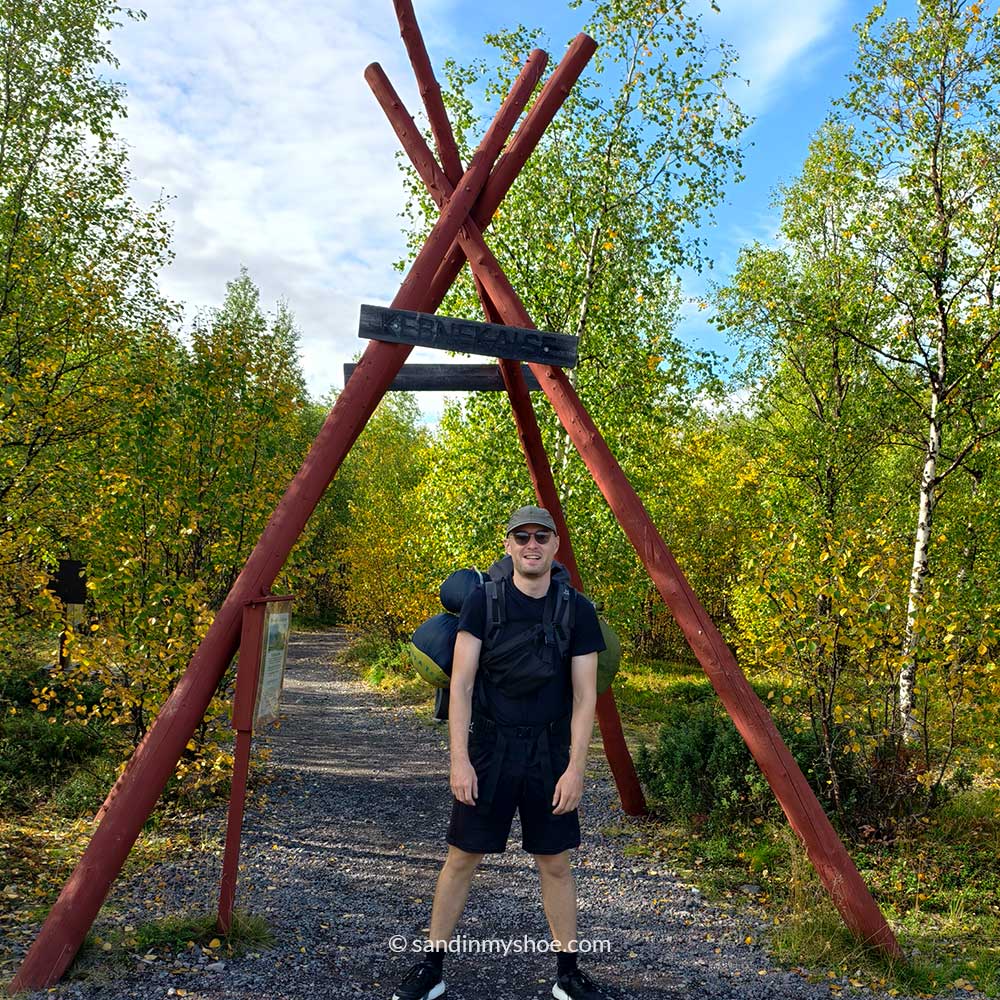
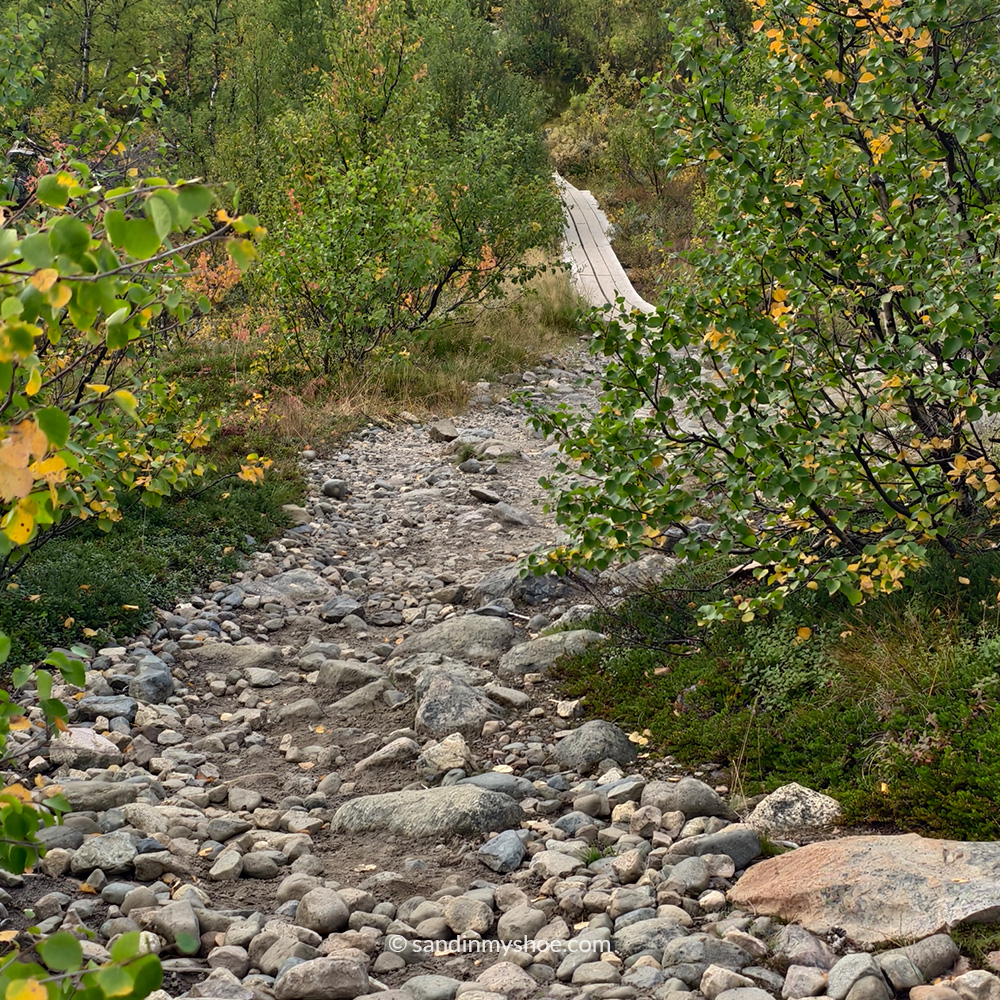
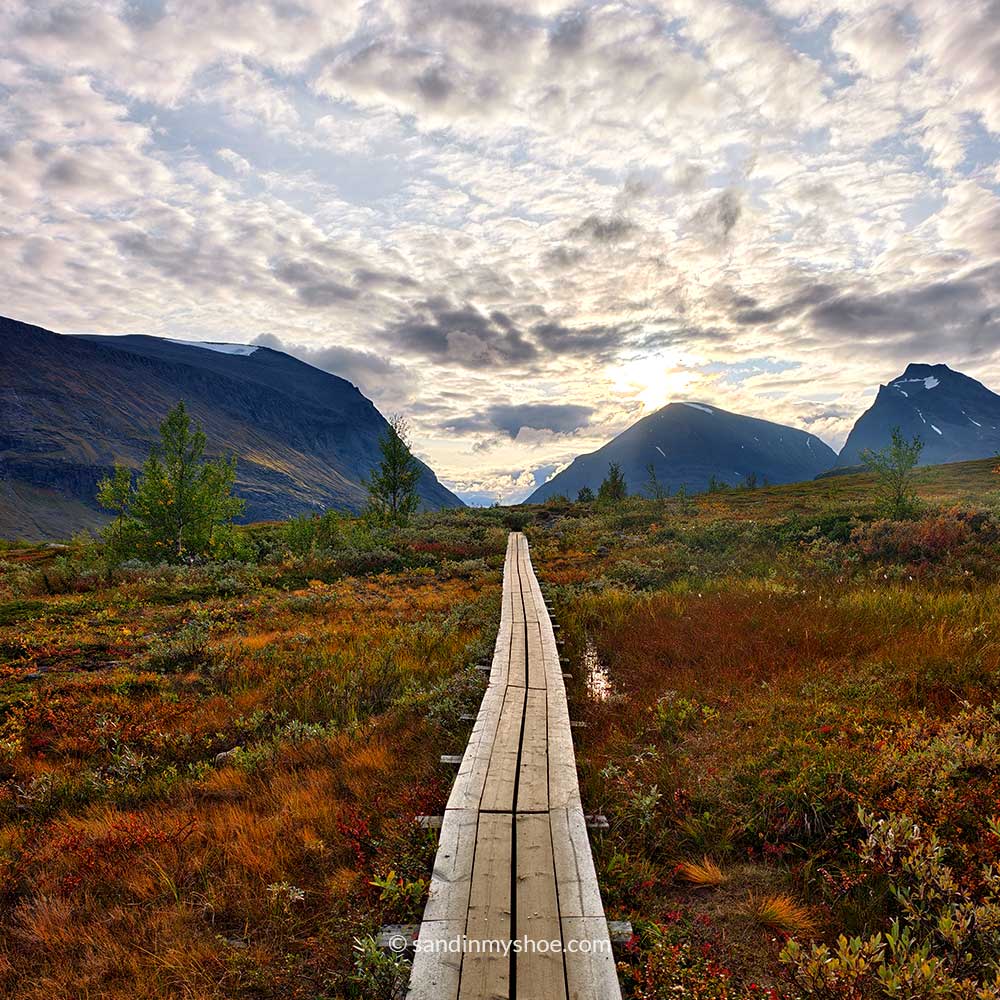
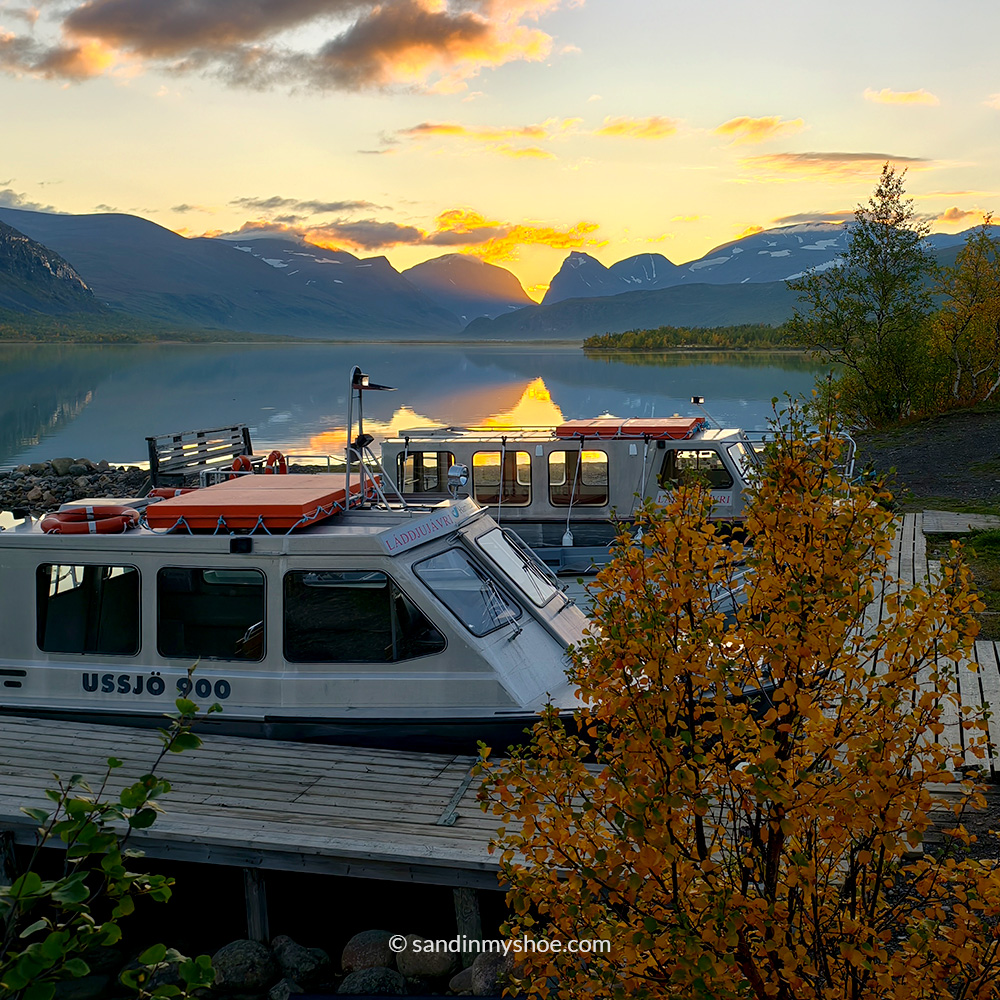
You don’t need to carry more than 1 liter of water on this route. There are plenty of natural water sources along the way—rivers, lakes, and even tap water available at Láddjujávri, a scenic lake 5.6 km from Nikkaluokta.
At Láddjujávri they offer:
- Restaurant and lodging facilities
- A scenic 6-kilometer boat ride that cuts 6 km off the hike. Cost is SEK 500 per adult / SEK 250 per child. A smart alternative for hikers who need to save their legs for the actual summit
- Tap water to refill your bottle
Personally, I just filled water from the rivers. It’s a slightly better option than from a lake because the water is moving. However, both options should be fine since the nature is so clean in this part of the world.
The Summit of Kebnekaise By the Western Route
The summit push is an 18 km round-trip with 2 000 m of climbing—expect 10–15 hours on the trail. The route starts on firm, earthy tracks before turning into uneven, rain-slicked boulders and small stream crossings. In wet conditions your trail runners will soak through quickly, so sturdy, high-ankle boots with aggressive tread are a safer choice.
The trail is marked with red spray dots on rocks and red signposts, making it relatively easy to follow under clear conditions. However, in thick mist or low visibility, navigation can become challenging—so always carry a map or GPS and be prepared for sudden weather changes.
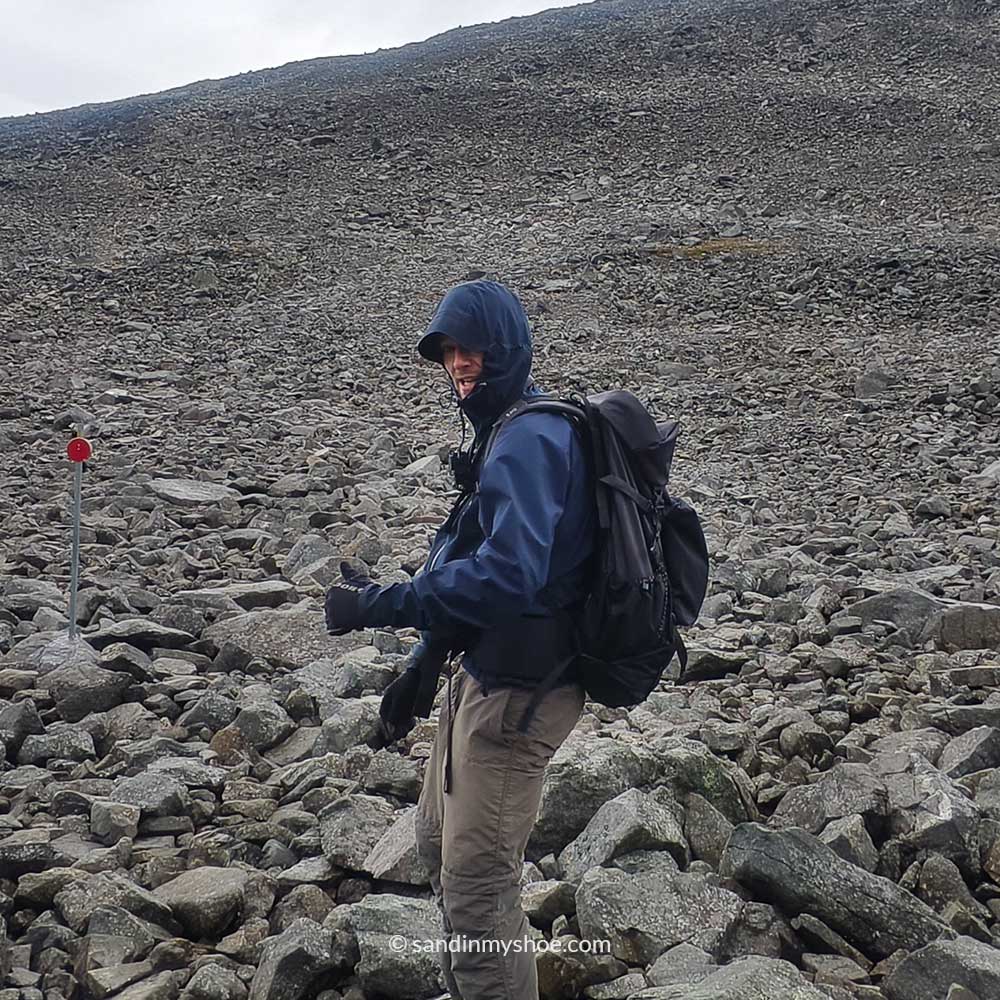
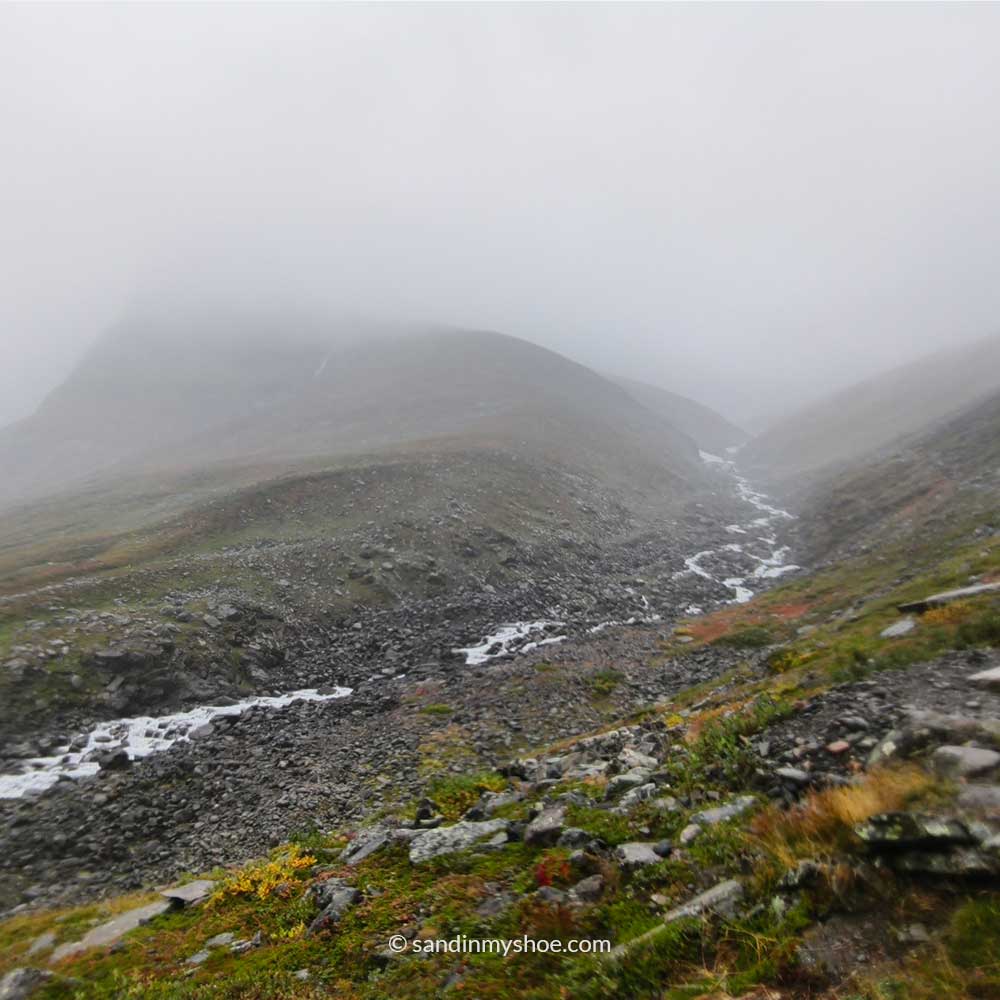
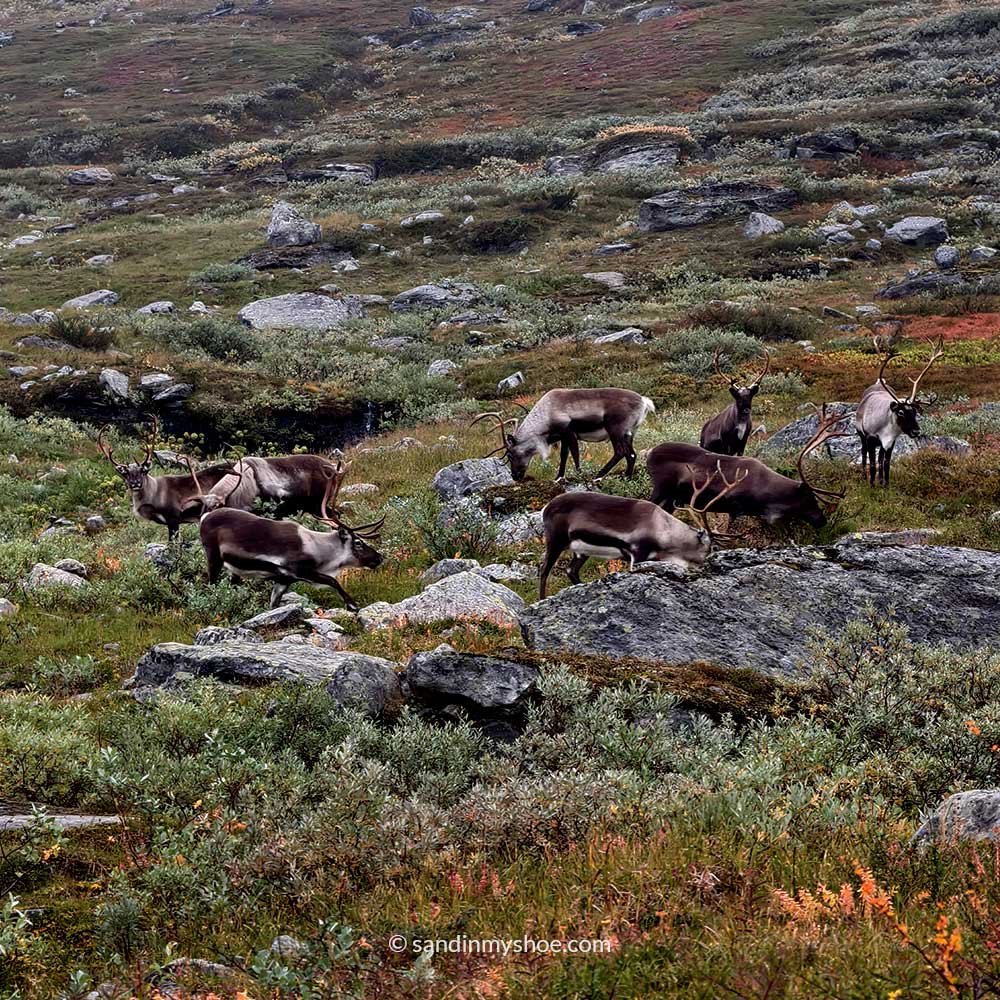
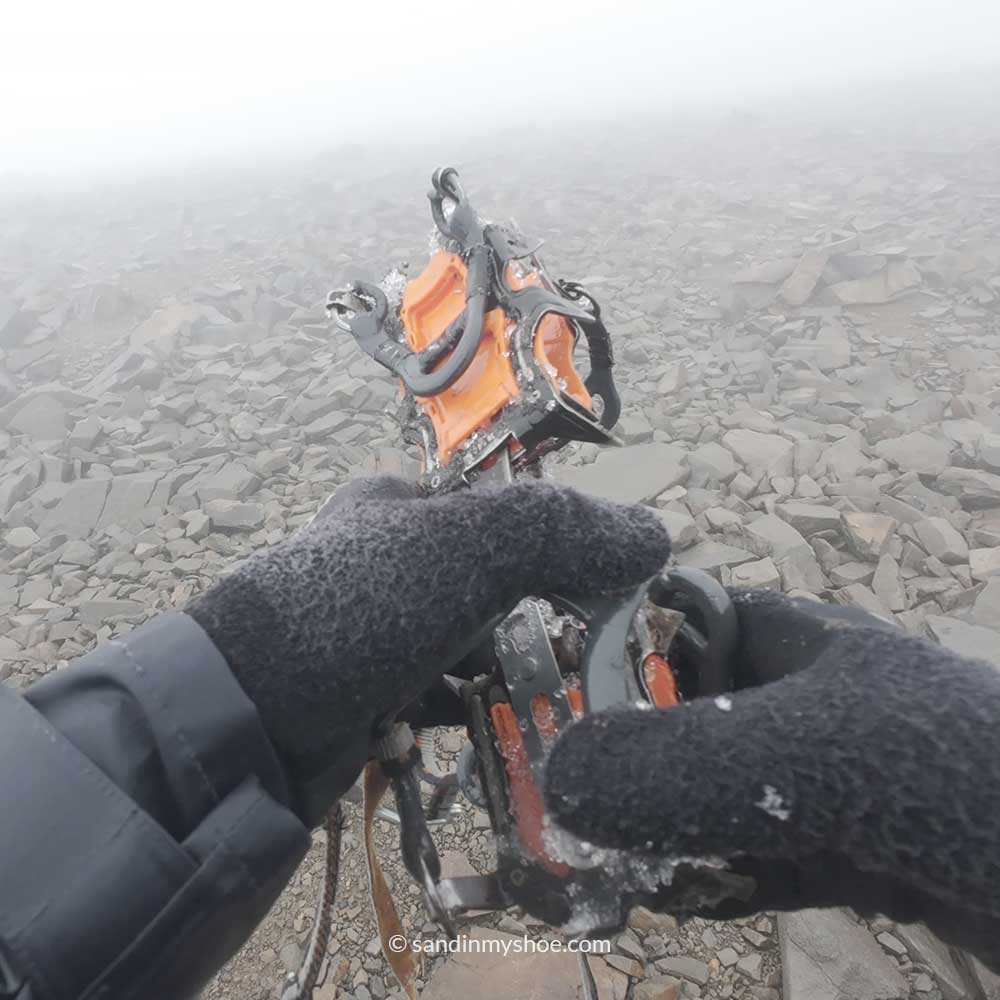
Plan to start at 06:00 for a standard summit day and prepare your daypack the evening before. If the forecast calls for intense heat, consider a 04:00 departure to beat the sun.
Along the way you can refill water from rivers until about 4 km in—the last reliable stop is at a bridge. Top off your bottles there to the brim, then carry at least two litres with you. Instead of one long break that cools you down, take several short rests to keep blood flowing and retain warmth. Find a steady tempo you can sustain—too fast risks burnout; too slow invites chills.
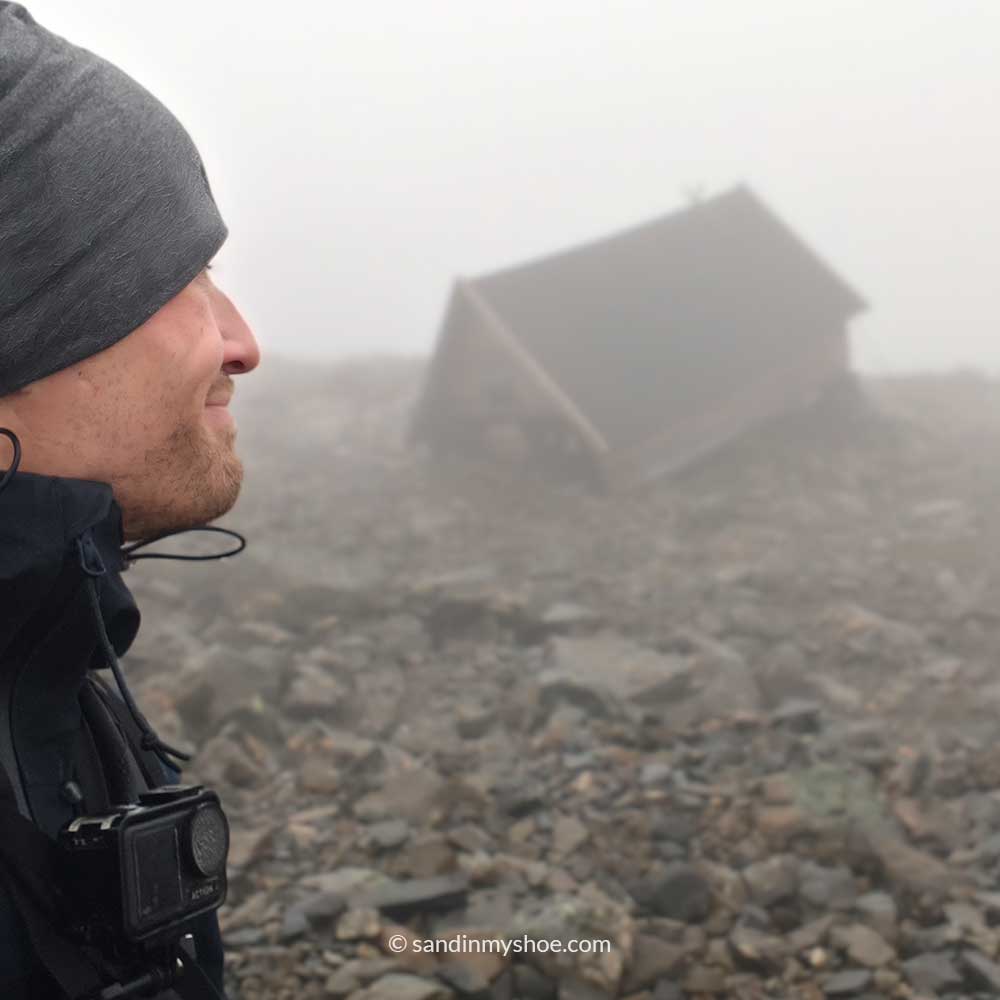
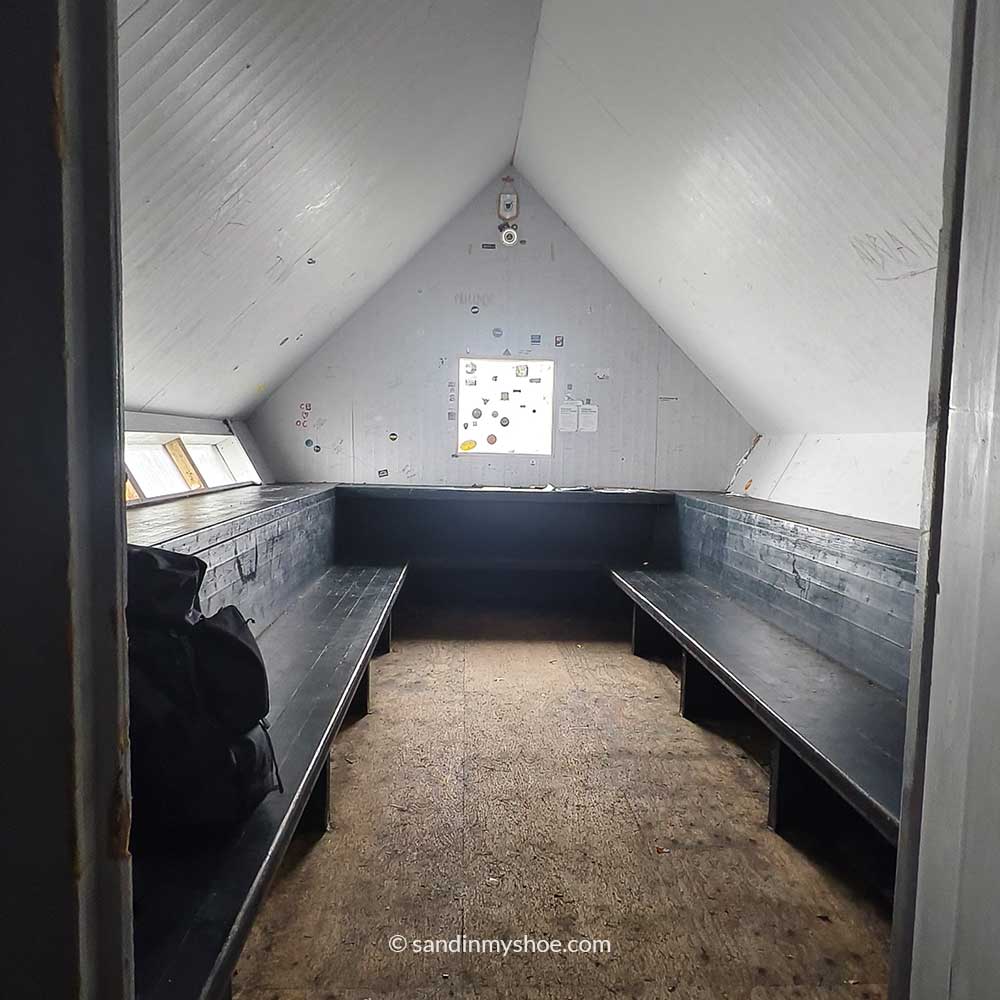
Near the top there’s a small cabin where you can shelter from wind and eat your lunch before the final ascent. About 100 m below the summit you enter the glacier—stop, strap on rented ice shoes, and scramble across icy terrain to the shifting summit cap.
Daypack essentials
- 2 L water bottle
- Lunch and high-energy snacks
- Waterproof shell and warm mid-layer
- Sunglasses, sunscreen, and a cap or buff
- Rented ice shoes
- Camera and personal essentials (leave bulky gear at the lodge)
After you’ve savored the summit views and celebrated, prepare for the long descent. Personally, I found the downhill harder on my knees—especially after cycling 1 500 km to the trailhead.
Curious about my experience hiking Kebnekaise? Check out my post: 3-day Hike to Kebnekaise
Accomodations & Facilities
Nikkaluoka
Nikkaluokta is a tiny village centered around a service house offering lodging, camping facilities and a restaurant serving breakfast, lunch and dinner. Here you can stay in cozy cabins, park your caravan or motorhome, or pitch a tent nearby.
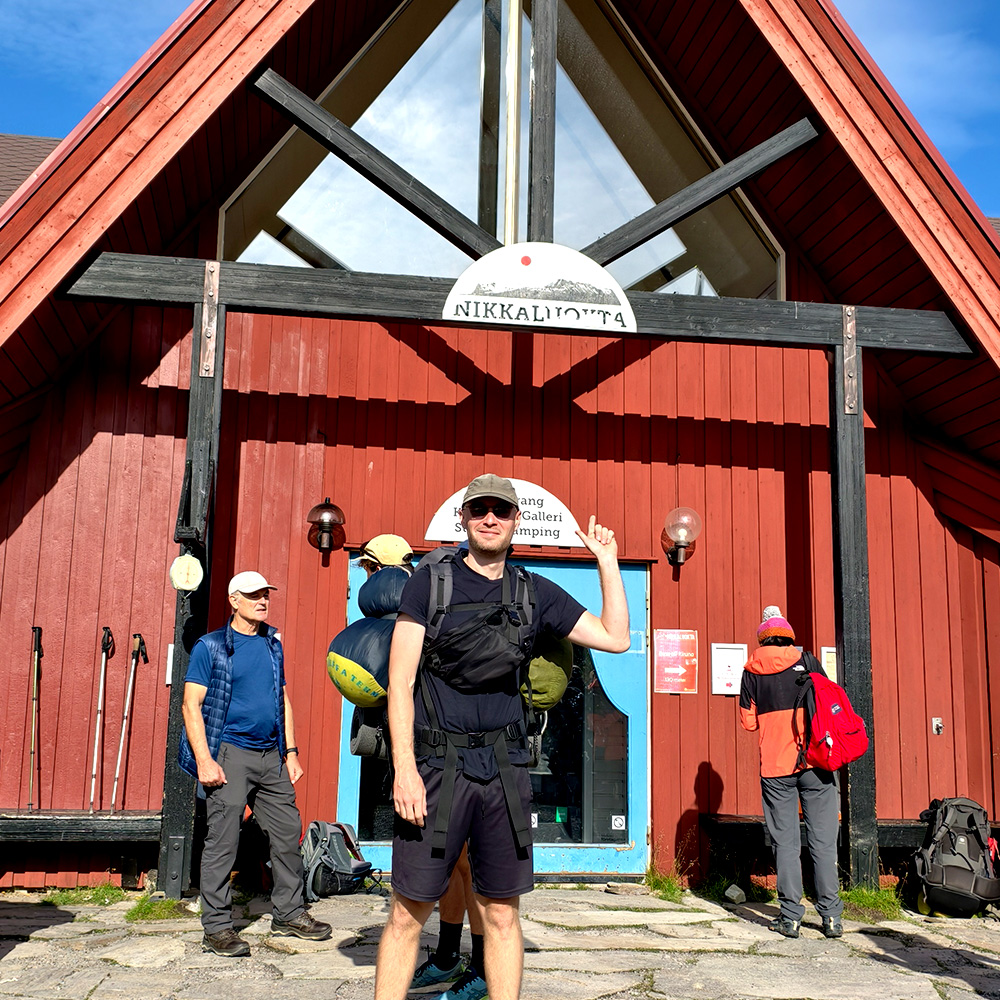
Sleep Options in Nikkaluoka
Cabins
Cabin stay: ~1 000 SEK per person, per night and includes base cabin rate, one-time cleaning fee, linen & towels.
Tent / Caravan / Motorhome
150 SEK per adult, per night
80 SEK per child (8–12 yrs), per night
Facility access is included in all overnight fees:
- Kitchen (with outlets for charging electronics)
- Toilets
- Showers
- Sauna
Kebnekaise Basecamp
Kebnekaise Basecamp sits at the foot of Sweden’s highest peak, offering a spectrum of sleeping options—from free wild camping to luxury rooms—and a full suite of shared facilities. A great restaurant with an adjoining bar serves breakfast, lunch, dinner and drinks.
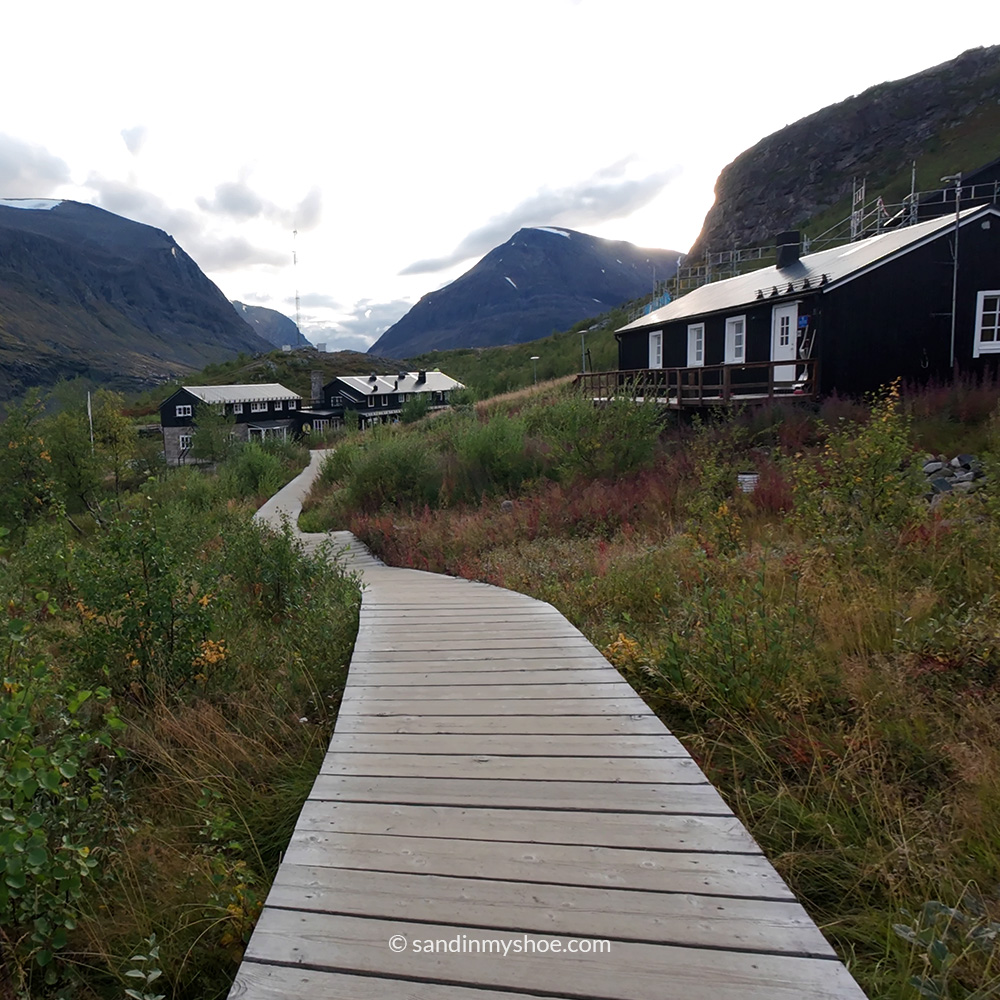
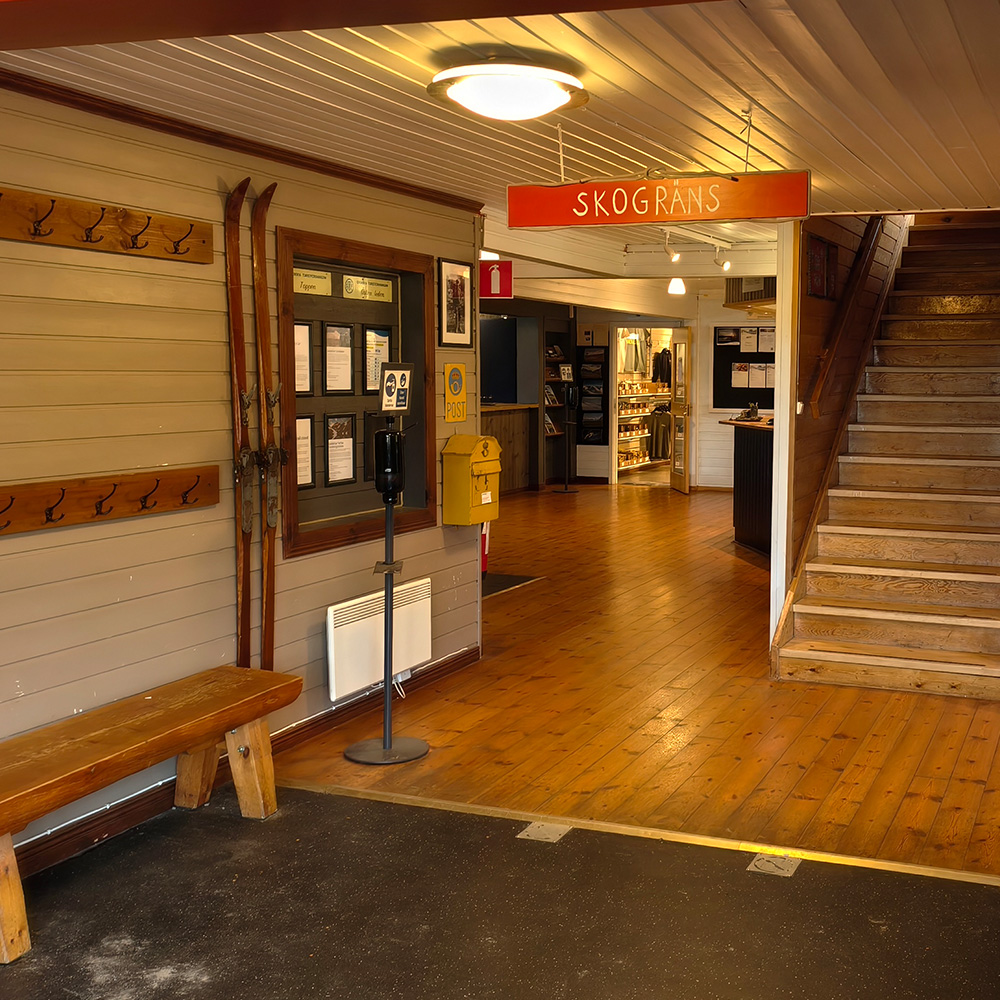
Sleep Options
Wild camping
Free anywhere ≥ 150 m from lodge buildings . There is a fee to use the facilities though.
- Adult non-member of STF: 350 SEK per night
- Adult STF member: 250 SEK per night
- Youth (16–25 yrs): 300 SEK non-member / 200 SEK member per night
- Child (≤ 15 yrs): free
Dormitory beds
600–800 SEK per person, per night
Private rooms (2–4 people)
500–900 SEK per person, per night (larger groups pay less)
Luxury rooms
Premium cabins and suites available at higher rates (SEK 2 000+ per night)
Equipment Rentals
- Walking sticks
- Daypacks
- Ice shoes (required for the final ~100 m ice scramble)
Facilities
These facilities are included for lodge guests; available to campers for a fee)
- Restaurant & bar
- Kitchen
- Drying room with cabinets
- Toilets
- Showers
- Sauna
Transportation
Cost of Bus from Kiruna to Kebnekaise and Vice Versa
If you plan to take a bus to Nikkaluokta, there is a bus company that specifically covers this section. One-way ticket prices are:
- Children (7–19 years): 150 SEK
- Youth (20–25 years): 230 SEK
- Adults (26–64 years): 300 SEK
- Seniors (65+ years): 230 SEK
Return tickets simply double the one-way price. If tickets are purchased directly on the bus, an additional fee of 200 SEK applies. Plan ahead! :)
Price Examples for an Adult Traveler
| Trip Style | Description | Key Costs | Total Cost |
|---|---|---|---|
| 2-Night Camping & Self-Cooking | Camp for two nights at Kebnekaise, cook your own meals |
Facility access (2 nights): 700 SEK Ice shoe rental: 210 SEK Beers (2): 200 SEK | 1 110 SEK |
| 2-Night Dormitory Stay & Meals | Stay in dorm two nights at Kebnekaise, eat all meals at the station |
Bus (round trip): 600 SEK Dorm (2 nights): 1 000 SEK Meals: 2 000 SEK Ice shoe rental: 210 SEK | 3 810 SEK ($381) |
| 3-Night Cabin Stay & Full Meals | First night in Nikkaluokta cabin, two nights at Kebnekaise with meals |
Bus (round trip): 600 SEK Cabin (3 nights): 3 000 SEK Meals: 2 000 SEK Boat ride: 500 SEK Beverages: 500 SEK | 6 600 SEK ($660) |
Questions & Answers about Hiking Kebnekaise
July and August usually offer the clearest views and lowest chance of rain.
While it’s generally recommended to hike with at least one other person for safety, many solo hikers do the trail — especially on clear summer days when the route is busy. If you’re well-prepared and the weather is good, you’ll likely meet plenty of fellow hikers along the way. Just make sure to inform someone of your plans and check the forecast before heading out.
Yes — they help with balance and reduce strain on knees, especially on the descent.
At the Kebnekaise basecamp.
On hot days, start as early as 04:00. If it’s very warm, no later than 06:00. Early starts help avoid heat and crowds.
Yes — always have at least one extra day in case of bad weather. Conditions can change quickly.
It depends. If you’re not used to hiking or trail running, hiking boots offer better ankle support. I personally got sore ankles from trail running shoes and they were completely soaked after the summit — so choose wisely.
Bring 1 litre for the hike between Nikkaluokta and Kebnekaise Mountain Lodge, and 2 litres for the summit. Refill whenever possible along the way

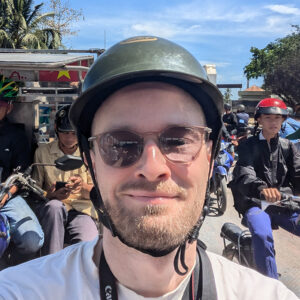
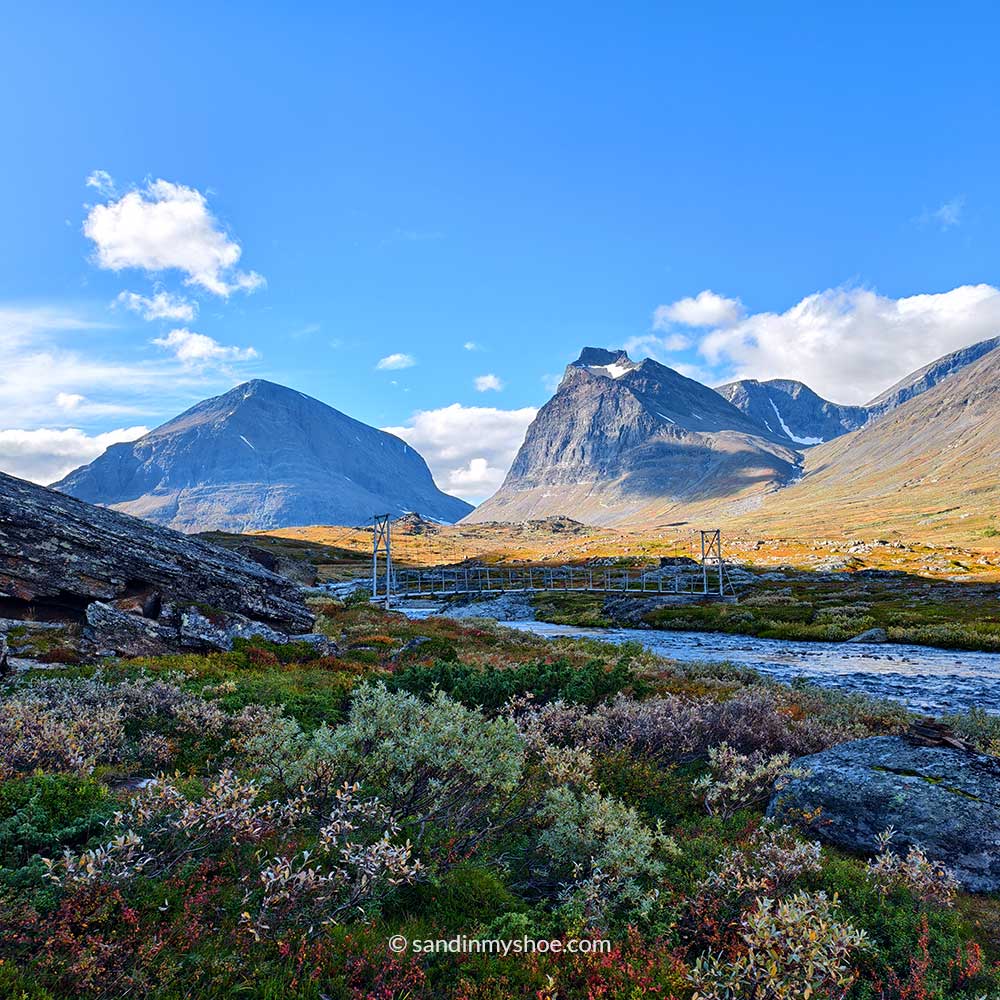




No comments yet, be the first one!
I appreciate hearing from you. If you have any suggestions, questions, or feedback, please leave a comment below. Your input helps ensure the information stays relevant and up to date for everyone.
Thank you for sharing your thoughts!